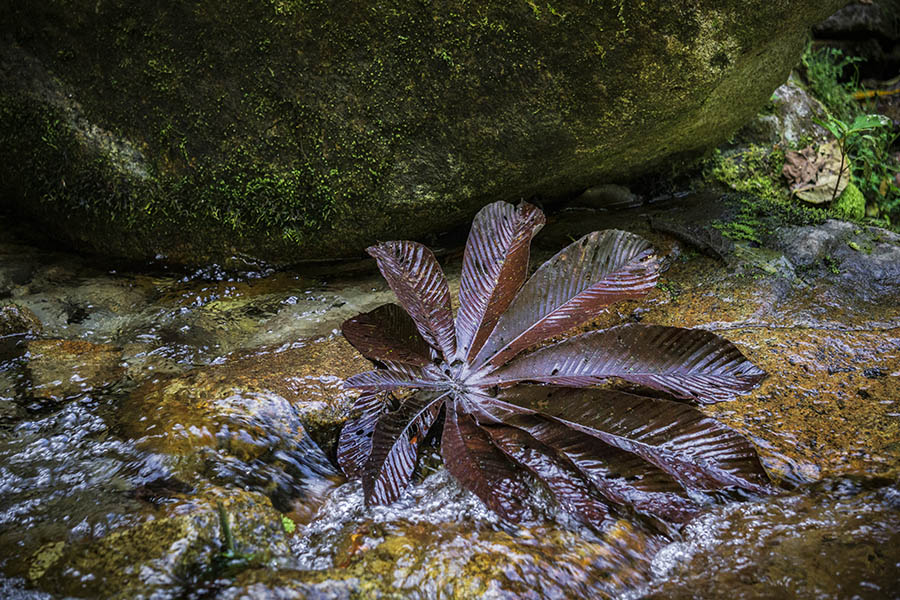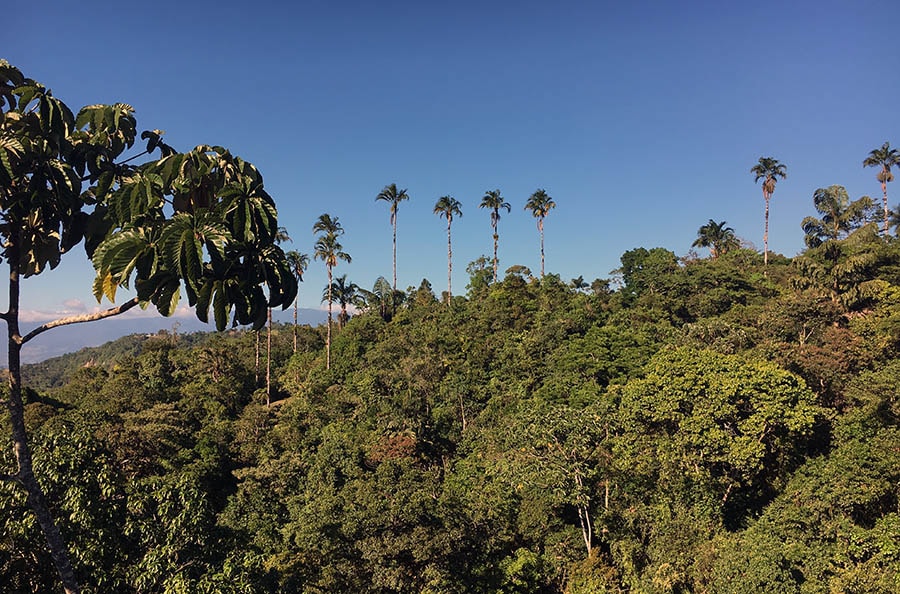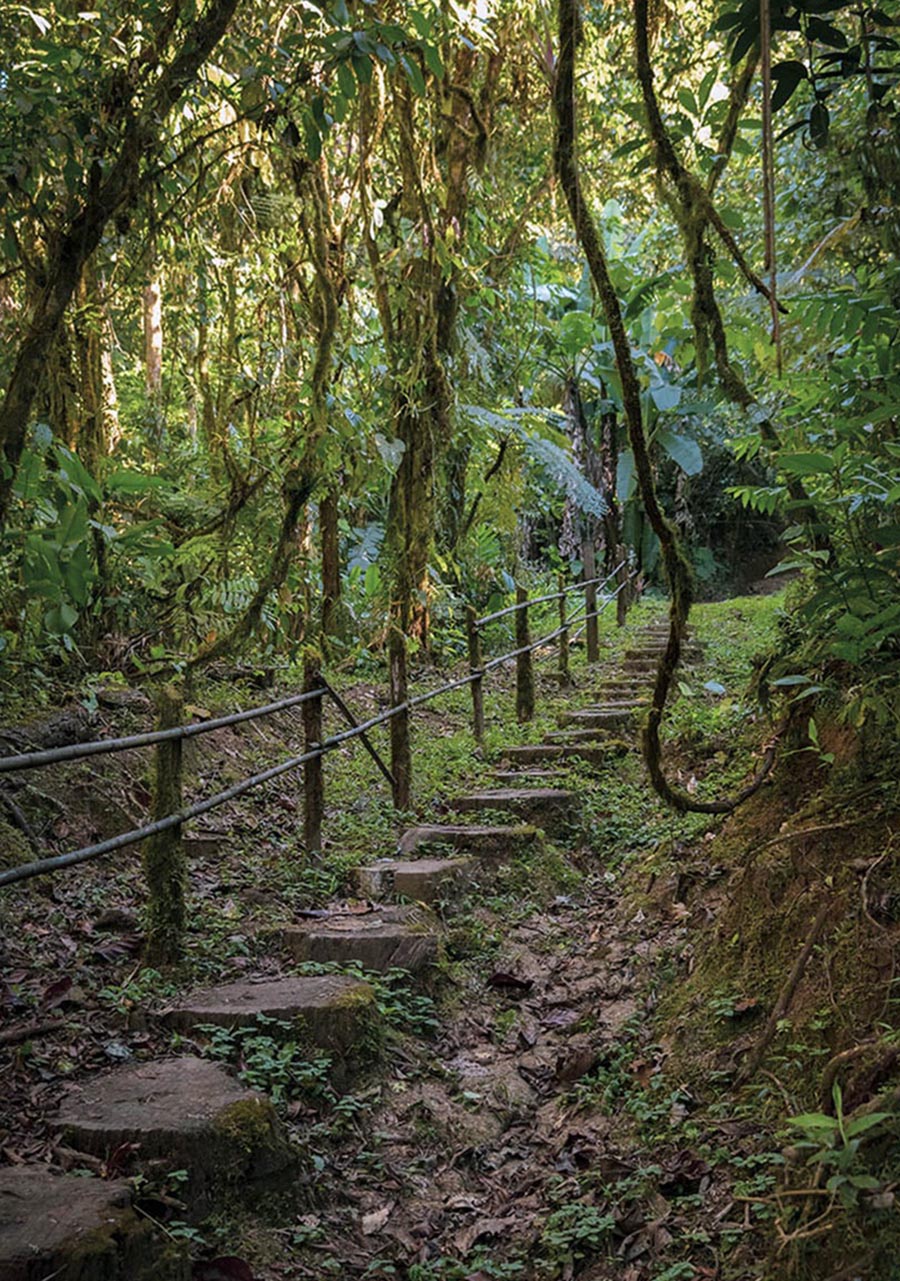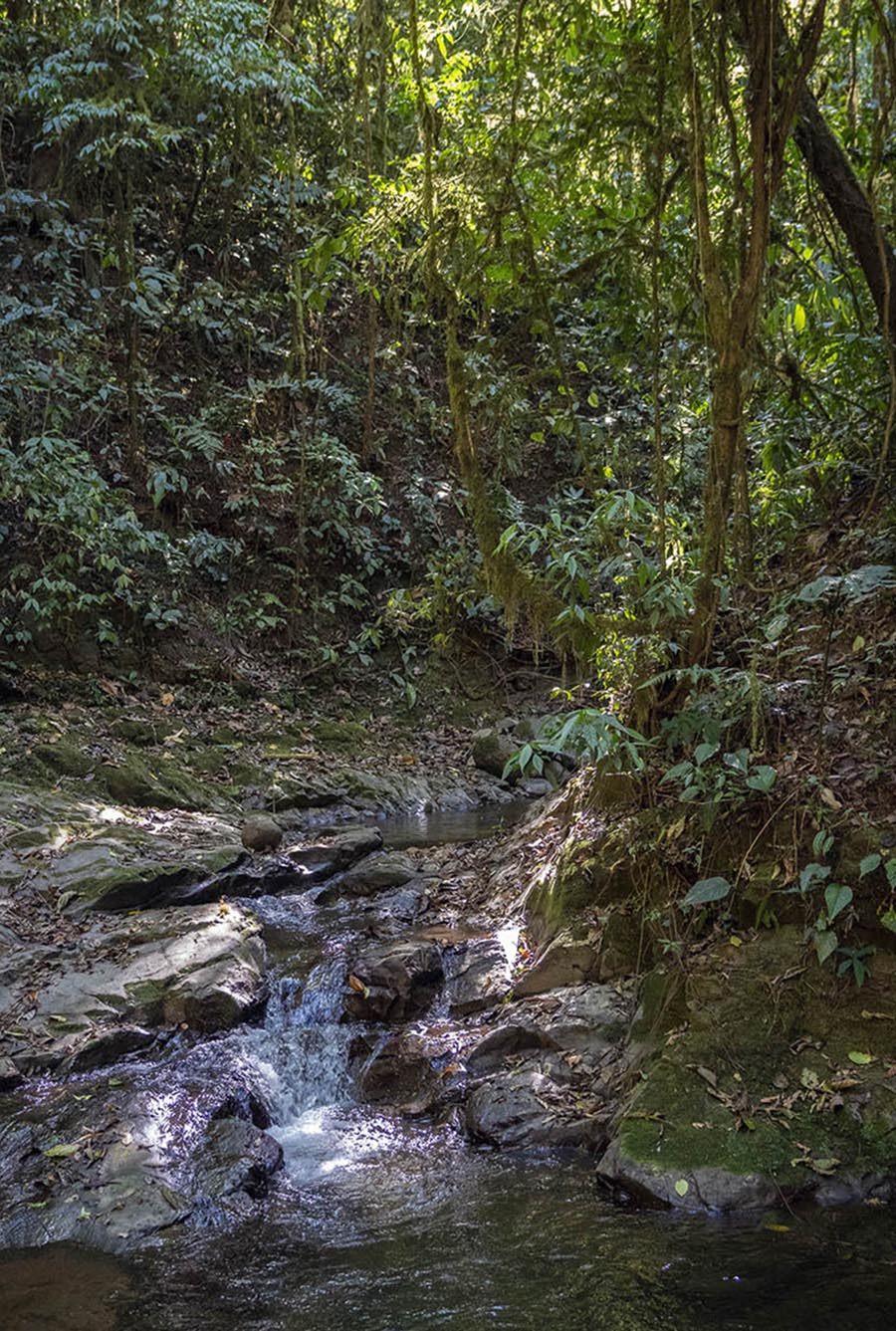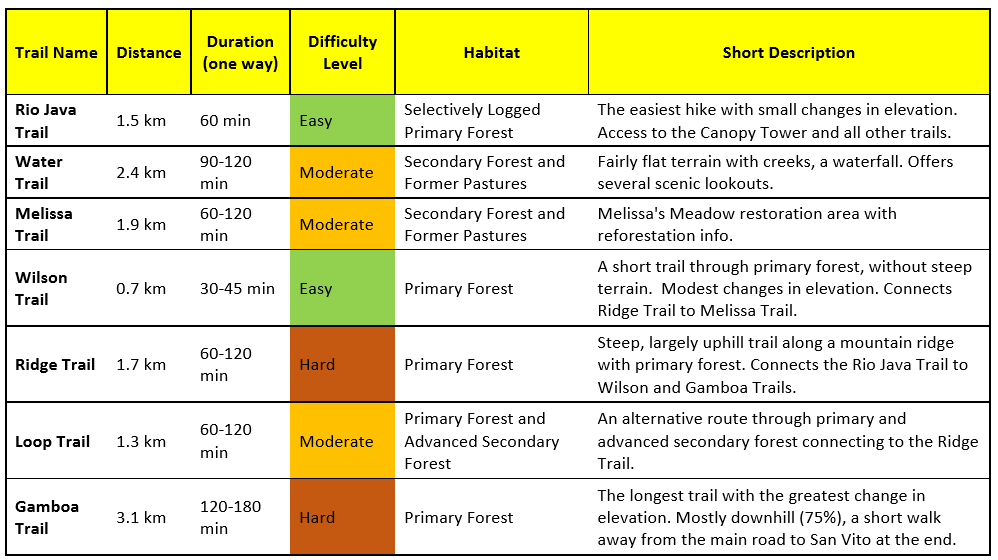There are many hiking opportunities around the small community of San Vito in Southern Costa Rica, but we had difficulty finding any information about local forest access and hiking trails before our visit to the Wilson Botanical Garden. As a result, we ended up not having sufficient time to walk all the trails in the area. The purpose of this blog is to share what we learned about the forest trails during our recent trip to Las Cruces Biological Station, so you can take a full advantage of its excellent hiking opportunities while in San Vito. The table at the end of this post lists all the trails open to visitors of the Wilson Botanical Garden with distances, approximate hiking time, difficulty level and other useful details about the terrain and hiking trails elevation profiles.
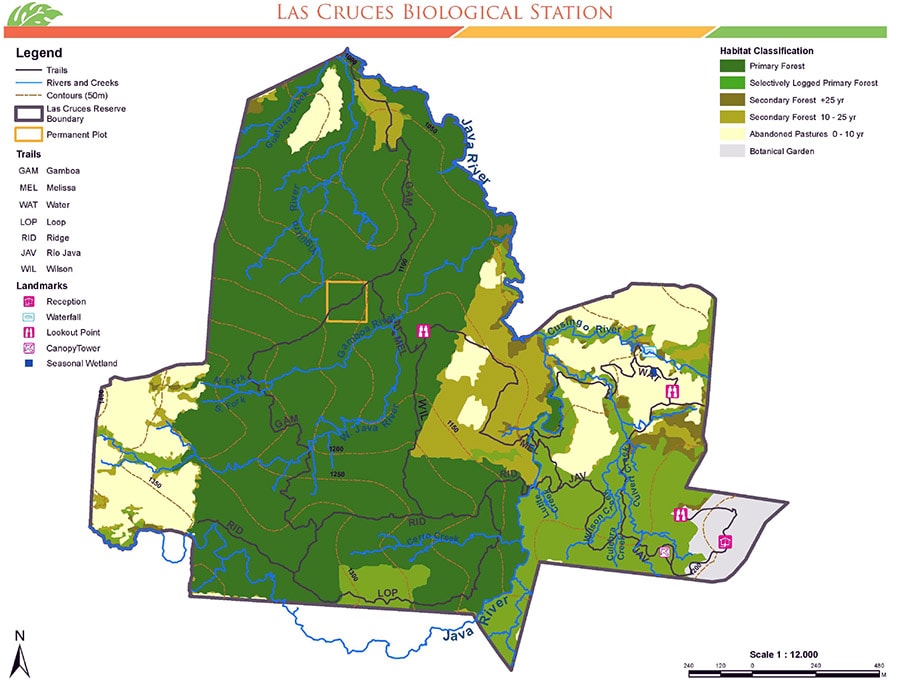
Las Cruces Forest Trail Network (Courtesy of OTS)
Las Cruces Biological Station maintains a sizable network of trails, which provide access to the forest reserve for its scientific staff, researchers and visitors
The Canopy Tower
Ever since its inauguration in May 2011, birding from Canopy Tower became a popular recreational activity of local naturalists at the San Vito Birding Club (which was instrumental in raising funds for this “landmark” at Las Cruces). The 4-story tower has multiple observation platforms with a breath-taking view opening in all directions from its very top.
Get up there, if only to get a sense of the place and to catch a glimpse of the iconic Pigafetta palms. Early in the morning, there is a good chance to spot birds and other wildlife in the surrounding forest.
Rio Java trail
This 1 km (0.7 miles) long trail will bring you to the Java River, which has been the water source for the town of San Vito for many years. The trail goes through selectively logged and advanced second growth forest, along a well maintained path with a few interpretive displays. Besides magnificent native vegetation, one might observe some local birds (such as manakins, forest wrens and falcons) and other animals (White-faced Capuchin monkeys, squirrels, coati-mundis, agutis).
Walking along the Rio Java trail, it’s hard to miss the Beehive ginger or Honeycomb ginger (Zingiber spectabile) with its bright-colored inflorescences. Unfortunately, this is one of the most problematic invasive species, which originated from the Botanical Garden and spread throughout the understory of the secondary forest. It has been out-competing some native gingers such as Renealmia cernua.
Melissa Trail
Back in 1998, “Melissa’s meadow” was purchased by Las Cruses from the neighboring Rojas family using a generous donation and was named in honor of the donor family’s daughter. This is a former pasture land that has now been essentially reforested and restored to secondary forest of local native tree species. This is the area of the forest where J. Berton C. Harris and J. Leighton Reid made their sound recordings of 135 bird species (early-successional birds as well as the mature forest avian species), which are now available (as a download) through Las Cruces Biological Station’s website.
Water Trails
The Water trail runs through the most recently acquired piece of land and, as the name suggests, crosses several creeks and offers a view of a smaller waterfall (a short hike off the main path).
Wilson Trail
Wilson trail is a short and easy trail, which cuts across primary rain forest and connects the Melissa Trail and the Ridge Trail.
Ridge Trail and Loop Trail
These trails are the most remote network of more demanding trails in the primary rain forest, which require significant amount of time and planning. The reward is the absolute solitude and close to pristine primary forest habitat. The shortest way to this trio of trails would also be the steepest, via the er Ridge trail and over the Rio Java.
The Loop trail, true to its name, provides a more moderate alternative and loops back to the steeper Ridge trail. Depending on your pace, both of these trails (~3 km) can be covered in 2-4 hours. The best way to explore this hidden corner of the Las Cruces Biological Station is to join the growing number of the overnight visitors.
Gamboa Trail
Gamboa trail is the longest (~3km) and one of the most rugged forest trails in Las Cruces. The area has been a part of the forest reserve since the mid-90s and served as research. Some of the rarest resident species of mature forests, such as an elusive puma, or the white-ruffed manakin, have been observed here.

